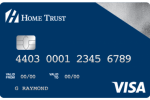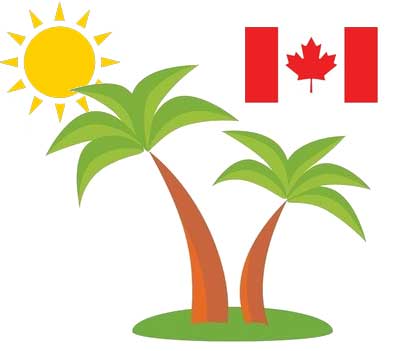
LAST REVIEWED: December 10, 2025
LAND BORDER CROSSING UPDATE:
Snowbird Advisor is aware of reports that since mid-October, some Canadian travellers entering the U.S. via land border crossings for stays of 30 days or more have been required by U.S. CBP officers to obtain a Form I-94 at the border prior to entering the U.S., which includes paying a $30 USD fee and being fingerprinted and photographed.
However, it is our understanding that this is not standard practice for CBP officers and is only occurring with a relatively small number of travellers. Many Canadians spending 30 days or more in the U.S. are still being allowed entry by land without having to obtain a Form I-94 prior to entry.
Accordingly, at this time, Canadians entering the U.S. via a land border crossing should continue to follow the registration requirement guidelines and processes outlined in the guide below.
In addition, we do NOT recommend that Canadians:
- Apply for Form I-94 online in advance of arriving at a land border crossing, or
- Request a Form I-94 when they arrive at a land border crossing
as both scenarios may cause confusion at the border and result in you being unnecessarily subjected to paying a $30 USD processing fee and being fingerprinted and photographed at the border.
HOWEVER, you should be prepared for the possibility that, in some cases, U.S. CBP officers will require you to obtain a Form I-94 at the border prior to entering the U.S. If you are required to obtain a Form I-94 at the border, you will need to:
- Proceed to the secondary inspection area at your land border crossing
- Pay a processing fee of $30 USD per traveller, and
- Provide your fingerprints and have your picture taken
Snowbird Advisor is following this developing situation closely and seeking further clarification from U.S. authorities. We will continue to update this page as new information becomes available.
As of April 11, 2025, some visitors to the United States who spend 30 days or more at a time in the U.S. are required to register with United States Citizenship and Immigration Services (USCIS).
These new registration rules may require some Canadian snowbirds to register with USCIS through their online registration portal by completing and submitting Form G-325R online after they enter the United States.
Unfortunately, there has been widespread misinformation and conflicting information circulating online and through word of mouth about the new registration requirements, which has created anxiety and confusion among Canadian snowbirds as to how to comply with the new rules.
To provide Canadian snowbirds and other travellers with accurate information about the new registration requirements and help guide them through the registration process, Snowbird Advisor has created the following resources, which have been reviewed by U.S. immigration attorney Rosanna Berardi, Managing Partner of Berardi Immigration Law in Buffalo, NY.
- Guide to U.S. Registration Requirements for Canadian Snowbirds Spending 30 Days or More in the U.S., based on information from official government sources.
- An FAQ section at the bottom of the guide that answers some of the most common questions we have received about the new regulations.
- A Video guide on How to Fill Out Form G-325R.
While our goal is to make the guide as comprehensive as possible, we are aware that there are still some unanswered questions related to the new regulations, and we will continue to update the guide as soon as we are able to verify answers to these questions from official government resources.
Important Notes:
The guide below is only intended for Canadian citizens and permanent residents. Registration requirements may be different for individuals who do not fall into these categories.
Registration requirements can change quickly and without notice, and while Snowbird Advisor will make efforts to update this guide in a timely manner when new information is available, we can only confirm that the information below is up to date as of the LAST UPDATED date posted above.
The guide below contains all of the information Snowbird Advisor has available related to the new registration requirements. Accordingly, we kindly ask that you refrain from inquiring about additional details that are not included in the guide, as we do not have any additional information.
The guide below is provided for informational purposes only and is not legal advice and should not be taken as such.
Background
On January 20, 2025, U.S. President Donald Trump issued executive order “Protecting the American People Against Invasion” that requires the Department of Homeland Security to ensure all “aliens” visiting the United States for 30 days or longer register with the U.S. government, as required under the section 262 of the Immigration and Nationality Act (INA) (8 U.S.C. 1302).
Shortly thereafter, U.S. Citizenship and Immigration Services (USCIS) announced new alien registration requirements that came into effect on April 11, 2025.
Who needs to register?
All aliens visiting the United States for 30 days or more (including Canadians) must register with USCIS after they enter the United States and prior to the expiration of that 30-day period. Registration is required for each trip of 30 days or more.
For Canadians, the registration requirements differ depending on your method of entry to the U.S. (by air or by land) and whether or not you are issued a Form I-94 when you enter the U.S.:
- Canadians who are issued a Form I-94 for their most recent entry to the United States are not required to register with USCIS, as they are already registered and no further steps are required.
- Canadians who are NOT issued a Form I-94 for their most recent entry to the United States are required to register online with USCIS by completing and submitting Form G-325R through the online registration process (outlined below). It's important to note that you can not register with USCIS by submitting Form G-325R online before entering the U.S. - you must do so after you enter the U.S. You can find more information about registration on the USCIS website here.
What is an I-94 and when is it issued?
Form I-94 is the Department of Homeland Security (DHS) Arrival/Departure Record issued to aliens who are admitted to the United States.
For Canadians, whether or not you are issued an I-94 when entering the U.S. generally depends on how you enter the country:
- Entering by Air: Most (but not all) Canadians who enter the United States by air are automatically issued an electronic I-94 when they arrive in the U.S.
- Entering by Land: Canadians who enter the United States through a land border are generally NOT issued an I-94 when they arrive in the U.S.
It’s important to note that Canadian citizens are generally not provided with any evidence that an I-94 has been issued when they enter the United States, as this occurs behind the scenes.
Can I apply for an I-94 online before travelling to the U.S.?
- Entering by Air: There is no option available to apply for an I-94 online in advance if you are travelling to the U.S. by air.
- Entering by Land: Technically, it is possible to apply online for a provisional I-94 up to 7 days prior to your arrival at a U.S. land border crossing. The application fee is $30 USD per applicant, and there are no refunds if your application is rejected at the border or you do not show up within 7 days.
However, applying for an I-94 online in advance of crossing a land border is generally discouraged, as U.S. Customs and Border Protection (CBP) officers are not obligated to approve online I-94 applications, and in practice, they rarely do so.
Can I request an I-94 at a U.S. land border crossing?
Technically, it is possible for Canadian travellers to request an I-94 card at a U.S. land border crossing. If your request is granted, you will be required to pay a processing fee of $30 USD per traveller and comply with CBP biometric requirements, which include providing your fingerprints and having your picture taken.
However, requesting an I-94 card at the border is generally discouraged and often denied, as U.S. Customs and Border Protection (CBP) officers are not obligated to issue an I-94 upon request, and in practice, they rarely do so at busy land crossings.
The primary reason is logistical: land border crossings - especially high-traffic ones like the Peace Bridge - process thousands of vehicles and individuals daily. If CBP were to accommodate routine I-94 requests at the border, it would require diverting travellers to secondary inspection areas, which are limited in capacity. This would lead to significant delays, congestion, and operational strain at border facilities.
Travellers who attempt to request an I-94 at the border may be denied simply due to volume and staffing constraints. CBP prioritizes efficient processing and typically reserves secondary inspections for cases requiring further scrutiny - not for administrative requests like I-94 issuance.
If you request an I-94 card at the border and your request is denied, upon entering the U.S., you are advised to check whether an electronic I-94 was automatically issued by visiting the I-94 website. If no I-94 record is found, you are required to register online with USCIS if you will be in the U.S. for 30 days or more.
How do I check my I-94 status?
After you enter the U.S., check your I-94 status on the U.S. Customs and Border Protection’s (CBP) I-94 website here to see if you have been issued a Form I-94 by following these steps:
- STEP 1: Visit the CBP I-94 website
- STEP 2: Click on the Get Most Recent I-94 tab
- STEP 3: Enter your traveller information, which includes your First Name, Last Name, Date of Birth, Country of Citizenship and Travel Document Number (Passport or NEXUS).
Important Note: For your Travel Document Number, if you have NEXUS, make sure you check both your NEXUS number and passport number to ensure you receive your most up-to-date I-94 information, as your most recent entry to the U.S. may have been recorded under one of these documents but not the other. - STEP 4: After you submit your traveller information, you should see information about your most recent I-94 record.
If an I-94 for your most recent trip to the U.S. appears, you are already registered with the U.S. government and no further action is needed on your part.
However, if no I-94 information appears or if the only I-94 information that appears is for previous trips, you are not registered with USCIS and need to register through the USCIS online portal.
If you are unable to determine with certainty if you have been issued an I-94 for your most recent trip to the United States, it is recommended that you register online with USCIS by following the steps below to avoid potential issues.
How do I register online with USCIS if I have not been issued an I-94?
As of April 11, 2025, all Canadians who:
- Enter the U.S. or are already in the U.S.; AND
- were NOT issued an I-94 when they most recently entered the U.S.; AND
- will be staying in the U.S. for 30 days or more
must register online with USCIS after they enter the U.S. by following the process below and completing the new Form G-325R, Biographic Information (Registration).
At this time, there is no fee to register with USCIS.
You can register online with USCIS through their online portal by following the steps below:
STEP 1: Create a USCIS online account. Learn more about How to Create a USCIS Online Account here.
Each person submitting Form G-325R must have their own individual USCIS online account.
STEP 2: Log in to your USCIS online account and complete and submit the new Form G-325R.
Form G-325R must be filed online through a USCIS online account. It cannot be filed by mail or in person.
When filling out Form G-325R, please carefully consider whether you have already registered. For example, if you have an Arrival-Departure Record number to provide in response to the question “What is your Form I-94 Arrival-Departure Record Number,” then DHS has already issued you evidence of registration. Anyone issued Form I-94 upon their admission to the United States is already registered.
STEP 3: Once you submit the completed Form G-325R, USCIS will review the information you provided and will post a notice (USCIS Proof of G-325R Registration) in your USCIS online account that provides proof of your registration that you will be able to download and print in PDF format. You must carry this document with you at all times during your stay in the United States.
If it appears that you have already complied with the registration requirements in some other way and do not need to submit Form G-325R, USCIS will notify you that you have already complied with the registration requirement.
Important Note: Canadians who register by completing Form G-325R do NOT need to be fingerprinted.
Updating your Address: All aliens in the United States required to register must report a change of address to USCIS within 10 days of moving. You can submit your change of address through your USCIS online account. See the USCIS How to Change Your Address page for more information about updating your address.
Penalties for failing to register: Any alien who willfully fails or refuses to apply to register will be guilty of a misdemeanour and will, upon conviction, be fined not to exceed $5,000 or be imprisoned not more than 6 months, or both.
More information about registering can be found here on the USCIS website.
VIDEO: Tips for Snowbirds to Complete Form G-325R
If you need to register online with USCIS, the following video provides helpful tips and guidance on how to complete the Form G-325R^^. The video was prepared for Snowbird Advisor by Berardi Immigration Law, a law firm based in Buffalo, NY, specializing in immigration law.
^^Please note that the form reviewed in the video below is the fillable PDF version of Form G-325R. However, Canadians who are required to register using Form G-325R must do so online through the USCIS portal. The process for completing the form online may be slightly different, but the questions should be the same.
















